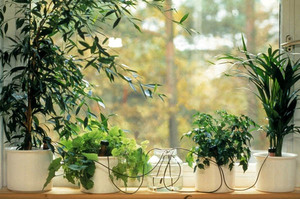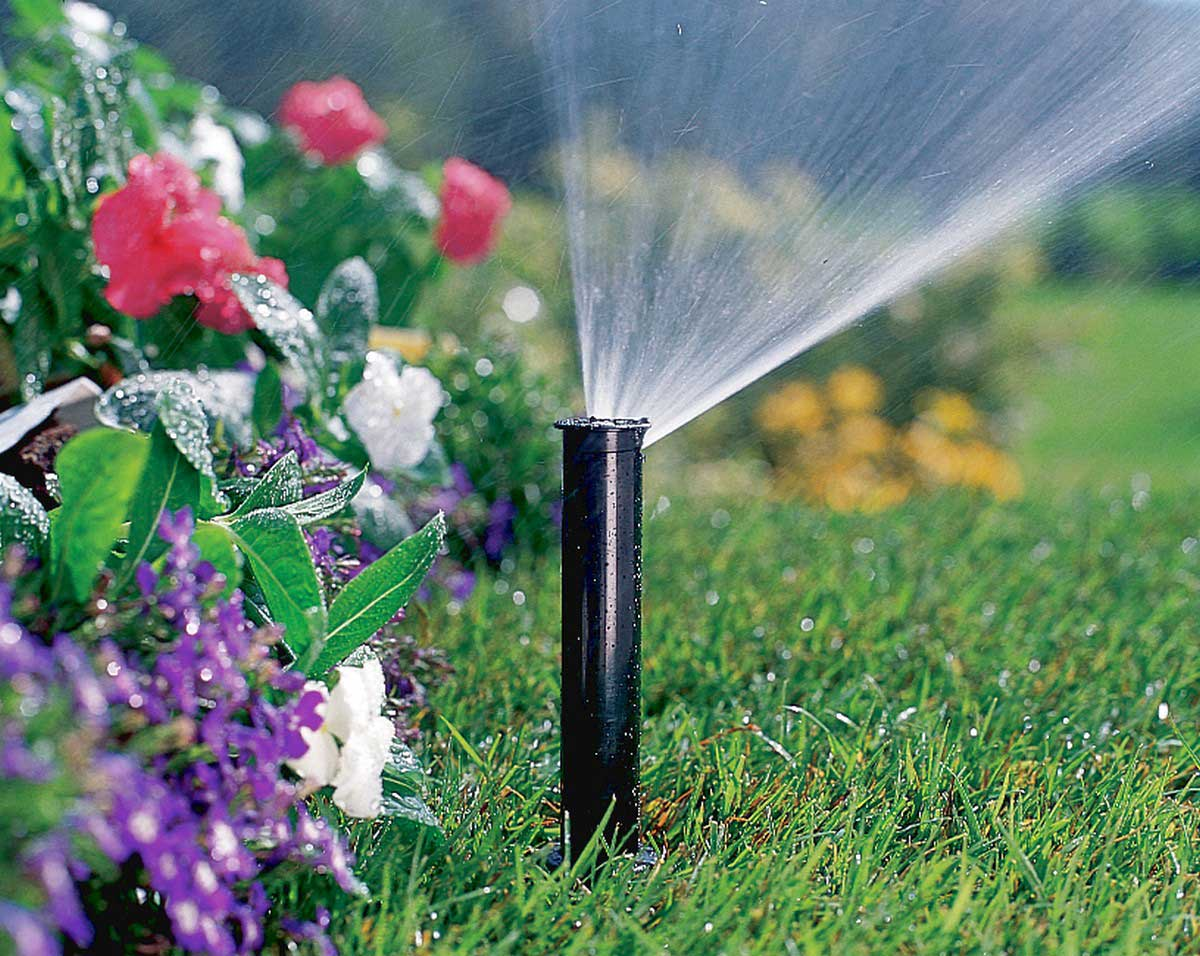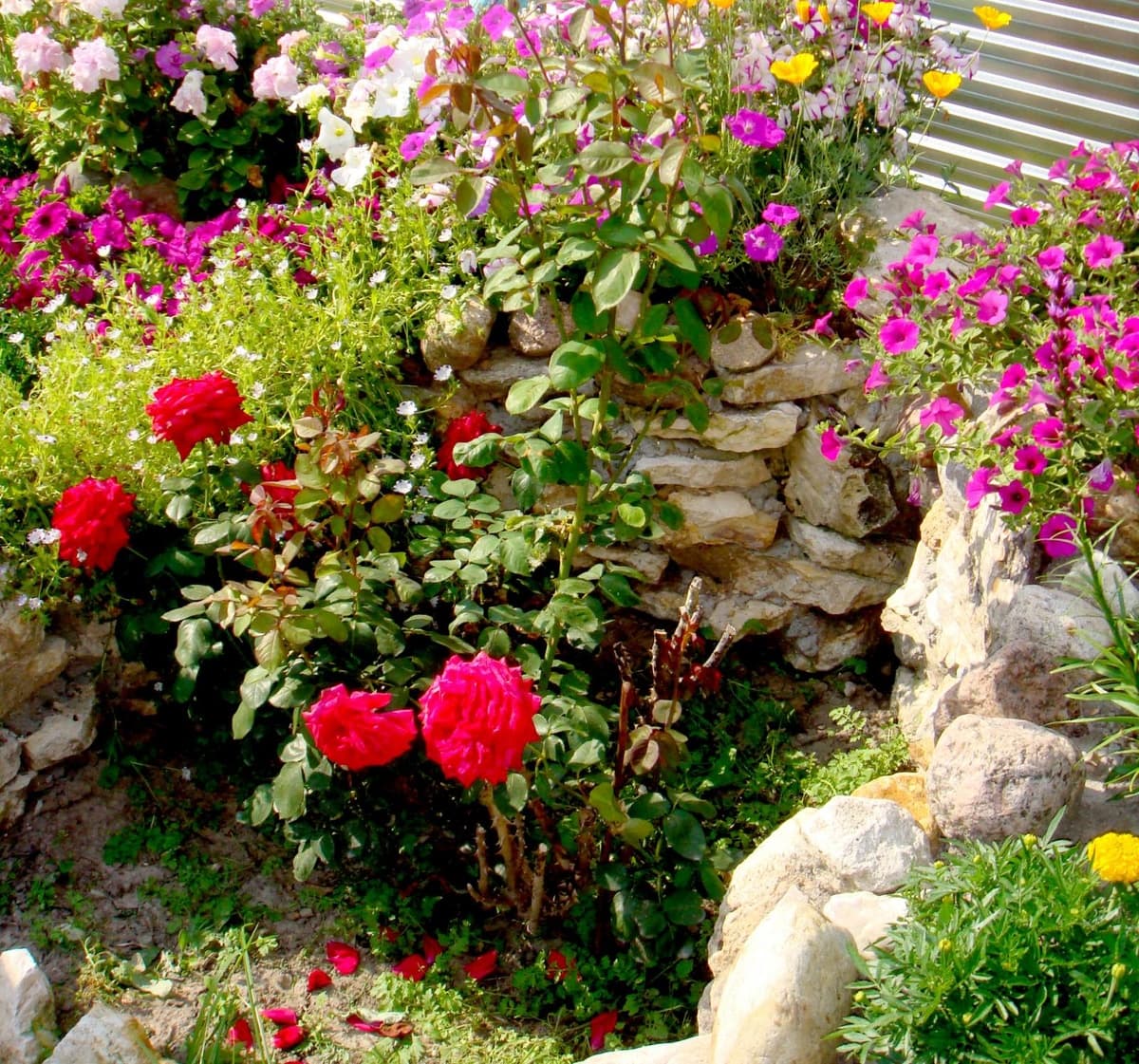Mixborder is one of the most difficult concepts in modern landscape design. As a rule, this concept means a mixed border or flower bed with free borders. One way or another, this concept is associated with the forms and boundaries that create the appearance of the garden area, and can be an important, one of the main elements of a properly designed landscape.
Today in Europe mixborders are experiencing their peak of popularity, while our fellow citizens are just beginning to adopt this trend. But it should be noted that this layout simply cannot but fall in love with, since witha mixture of a wide variety of plants - different sizes, shapes and colors - looks pretty picturesque and bold... With this personal plot, the house will be nice to stand out among the crowd of other similar suburban areas.
Content
How to make a mixborder with your own hands?
In order for the mixborder to harmoniously fit into the landscape design and, at the same time, not look too pretentious, you will need to put in quite a lot of effort - but believe me, it's worth it.
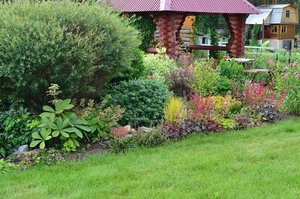 The most popular constituent elements of this space are all kinds of conifers and perennials, which will be a real highlight of the personal plot, as well as cereals, which will add naturalness to the garden plot. But the most important thing here is freedom of imagination, you can select absolutely any plants and flowers... You independently select their shape, color and size, and you yourself select them according to a variety of criteria. It is quite possible to plant even indoor flowers on the backyard, which, it would seem, have absolutely no place here - we are sure they will not cause any inconvenience and will take the most honorable place here.
The most popular constituent elements of this space are all kinds of conifers and perennials, which will be a real highlight of the personal plot, as well as cereals, which will add naturalness to the garden plot. But the most important thing here is freedom of imagination, you can select absolutely any plants and flowers... You independently select their shape, color and size, and you yourself select them according to a variety of criteria. It is quite possible to plant even indoor flowers on the backyard, which, it would seem, have absolutely no place here - we are sure they will not cause any inconvenience and will take the most honorable place here.
Before you design a mixborder with your own hands, you need to carefully consider its main role. First of all, you need to set yourself two tasks:
- In what style the mixborder will be designed.
- What range of colors will prevail on your flower garden?
It is necessary to build on these two important components further.
The color scheme must be based or on a combination of contrasting shades, or on a combination of similar shades on the same areathat will complement each other. If you have a house in a rustic style, then it is quite logical to arrange the mixborder in exactly the same style - only in this way, you can achieve the harmony of the composition, which is so often mentioned by landscape designers. In this case, the main flowers for the mixborder will be various wildflowers - chamomile, bells, evening primrose, monarda, phlox and daylilies.
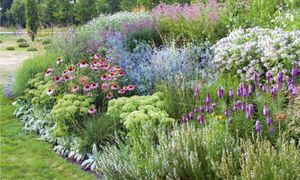 More complex compositions in the garden require, of course, a more complex design of the mixborder - this concept here does not mean a large number of plants and flowers, but says that it by all means must match the style of your design... The most difficult thing for all flower growers is that they are monochrome designs, which are often beyond the power of even a very experienced gardener and landscape designers.
More complex compositions in the garden require, of course, a more complex design of the mixborder - this concept here does not mean a large number of plants and flowers, but says that it by all means must match the style of your design... The most difficult thing for all flower growers is that they are monochrome designs, which are often beyond the power of even a very experienced gardener and landscape designers.
Before you make a do-it-yourself mixborder in the garden, for a start, we advise you to look at the flowers that are in your backyard territory, and then make a list of those plants that you need to buy to decorate a suburban area suitable in style and color.
What flowers are combined with daylilies in the landscape design of the garden:https://flowers.bigbadmole.com/en/sadovye-cvety/s-kakimi-cvetami-sochetayutsya-lileyniki-v-dizayne-sada-foto.html
Scheme of a mixborder blooming all season
If you want the mixborder to bloom throughout the season, then you need to select plants in this way so that they replace each other during flowering.
Standard mixborder landing scheme:
- First row - undersized flowers (they are often also called border flowers). These are small-bulbous, subulate phlox, saxifrage, and similar flowers. They will also look great in the first row of heather, rejuvenated and Erica;
- Second row and the next - more dense and taller plants;
- For the last row most often the highest flowers are planted, since they help to hide an ugly fence, wall or a view of a neighbor's plot that you do not like very much. This is just the perfect solution to this problem.
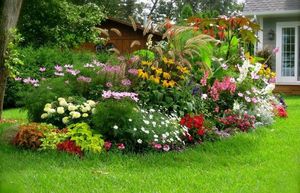 In order not to confuse a mixborder with a border or a rabatka, we draw attention to the fact that this design is characterized by a free location of flowers in a group, where each of them, as it were, flows into each other, thus forming a natural and natural look.
In order not to confuse a mixborder with a border or a rabatka, we draw attention to the fact that this design is characterized by a free location of flowers in a group, where each of them, as it were, flows into each other, thus forming a natural and natural look.
We also recommend planting plants in groups that bloom at the same time, evenly over the entire area - thus, the color scheme throughout the season will be replaced by foliage of those flowers that have already faded or are just beginning to bloom.
The last row of the mixborder
All flowers in a mixborder can be divided into two types:
- Flowers that fill the entire space.
- Skeletal flowers, which are the basis that sets the overall tone of the flower bed.
Skeletal flowers are planted in the back row at an evenly spaced distance and, if you picked it up for this purpose ornamental plants with abundant flowering and large leaves, then it is imperative to take this fact into account at the initial stage of their planting. Plant them at a decent distance from each other (as a result, they will not interfere with each other when they grow to full strength). By the way, they are very often planted along high fences - thus, they are now both a bright decoration and a way to hide the most ugly parts of your fence (and not only fences - this technique is quite suitable for various vertical surfaces).
What perennials to plant in the country so that they bloom all summer:https://flowers.bigbadmole.com/en/sadovye-cvety/kakie-cvety-mnogoletniki-posadit-na-dache-chtoby-cveli-vse-leto-i-foto.html
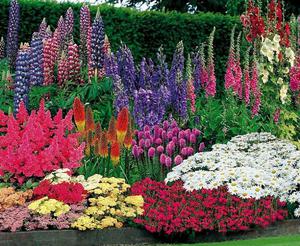 Skeletal flowers must certainly fit into a single picture of the mixborder, but some designers still leave them a complementary and secondary role - these plants become something like a frame for a more picturesque composition... The most popular varieties used as skeletal plantings are elderberry, red-leaved plum, white turf, jasmine and park roses.
Skeletal flowers must certainly fit into a single picture of the mixborder, but some designers still leave them a complementary and secondary role - these plants become something like a frame for a more picturesque composition... The most popular varieties used as skeletal plantings are elderberry, red-leaved plum, white turf, jasmine and park roses.
Also, the plant compositions you purchased for the skeleton should not be exotic and rare, which in winter will require some additional conditions, including covering during frosts. It is very important that they are durable and very durable.
In order to correctly select a skeletal plant, you need to find the initial point of view - from this point the overall picture of the mixborder must be visible (that is, shrubs and trees should not be very large, they should be fully visible).
Middle row of mixborder
All designers leave the middle row of the plant and flower mixborder with tall trunks to cover with the first row of flowers. This is truly a designer flight of fantasy - fritillari, lilies are quite suitable for this purpose and other plant varieties that grow and bloom in July. We perfectly understand that a flower cannot immediately reach its maximum length, therefore, to mask the trunks, at the first stage, you can plant letniki or simply fill in a layer of mulch. Florists say that some of the summer varieties are quite aggressive and not only slow down, but also stop the growth of your plants.
Perennial mixborders
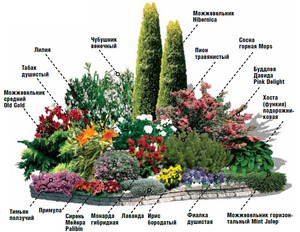 We recommend organizing a mixborder of perennials on the inner or outer border of your backyard territory, but you can also pick up the simplest objects - rock gardens, lawn edges, garden paths, etc.
We recommend organizing a mixborder of perennials on the inner or outer border of your backyard territory, but you can also pick up the simplest objects - rock gardens, lawn edges, garden paths, etc.
Typically, perennials are used as filling flowers. You can divide their groups by several decorative leafy hybrids and varieties. For example, bsilvery and delicate wormwood leaves will look attractive against the background of brighter flowers or cineraria. If you chose contrast as a color scheme, then you can choose bright leaves of certain types of heuchera, tunbergia or geranium. You can also plant some cereals right there, sedge, pearl barley are best suited, feather grass and haretail.
We supplement the remaining area with annual plants, for example, jasmines and tulips, which are passed on to them in autumn. For these flowers to be a truly decorative element, it is best to plant them in small groups. Try to avoid aggressive species - they grow rather quickly and hinder the development and growth of plants in the neighborhood.
By and large, there are a large number of planting schemes for plants and flowers in the mixborder - you can see them in the photo. A properly created mixborder will truly decorate your backyard and a place of attraction for all family members and your guests.
Mixborders with conifers
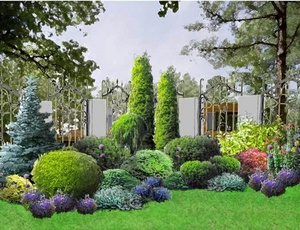 If you decide to do something really unusual on your garden plot, we advise you to try to make a mixborder not with flowering plants, but with conifers. In this case, your garden area will be able to please you with greenery from the beginning of spring until the very first frosts.
If you decide to do something really unusual on your garden plot, we advise you to try to make a mixborder not with flowering plants, but with conifers. In this case, your garden area will be able to please you with greenery from the beginning of spring until the very first frosts.
You need to carefully choose the bushes and trees for this mixborder - pick up a thesis from conifers, which, at their maximum height, have a length of no more than 1.5 m... This will make it possible to preserve the integrity of the composition - this is one of the most important features of a mixborder. For example, you decide to plant a spruce on your garden plot - no problem, but just pick up a dwarf variety.
Fir and pine will take root perfectly in this composition, but also certainly a dwarf variety. And add to them in the composition thuyu and juniper in the form of a column and a narrow pyramid, respectively. The severity of lines and aesthetics will make mixborders with conifers a favorite way of decorating suburban areas.
Without rhododendron, we simply cannot go anywhere in the coniferous mixborder. This deciduous bush will perfectly accentuate the needles on the rest of the plants., and in the fall, the crown of the rhododendron also receives the brightest colors - orange, yellow and red. As a result, the effect will be just great.
Representatives of the Heather group are suitable for subsequent levels - their leaves are very similar in appearance to needles, therefore they will be like those poured into a mixborder of conifers. And we can arrange the bottom row to our liking, many designers use instead ordinary stones overgrown with moss.
Frost-resistant varieties of rhododendrons will decorate your garden:https://flowers.bigbadmole.com/en/sadovye-cvety/rododendrony/morozoustoychivye-sorta-rododendronov-opisanie-vidov.html

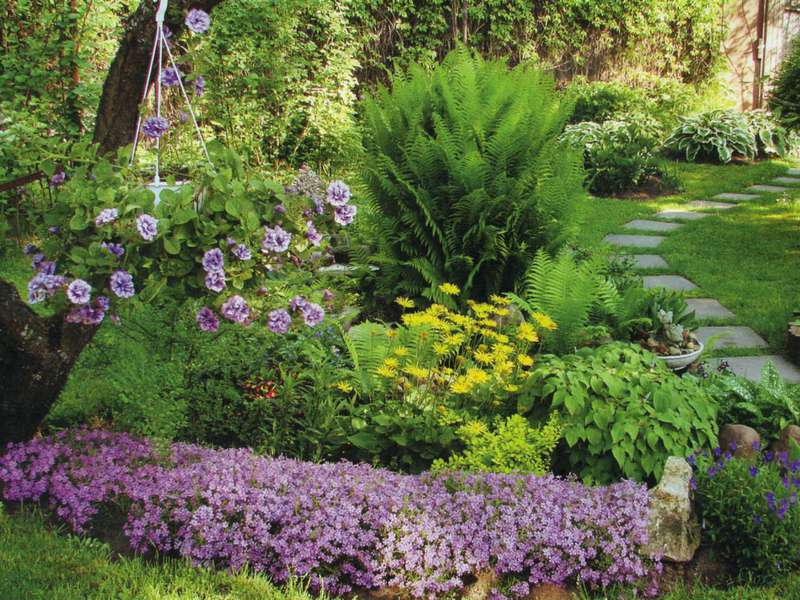
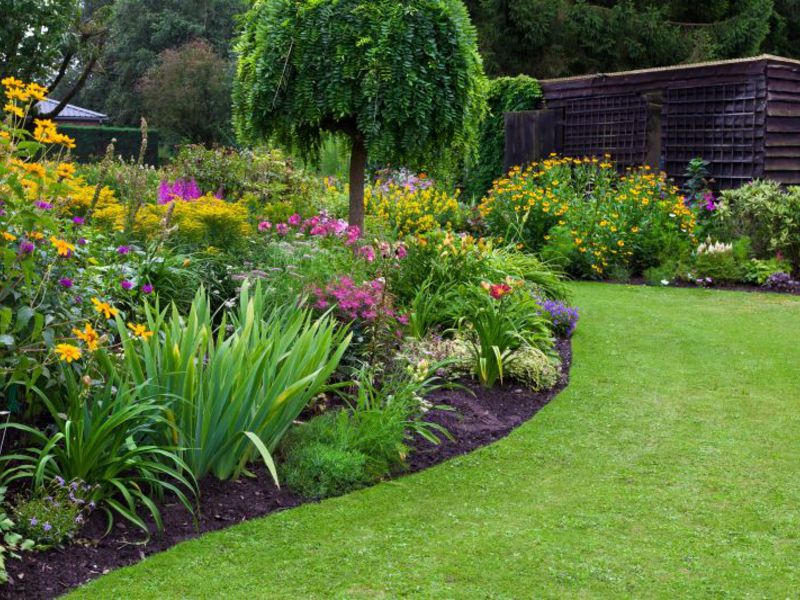
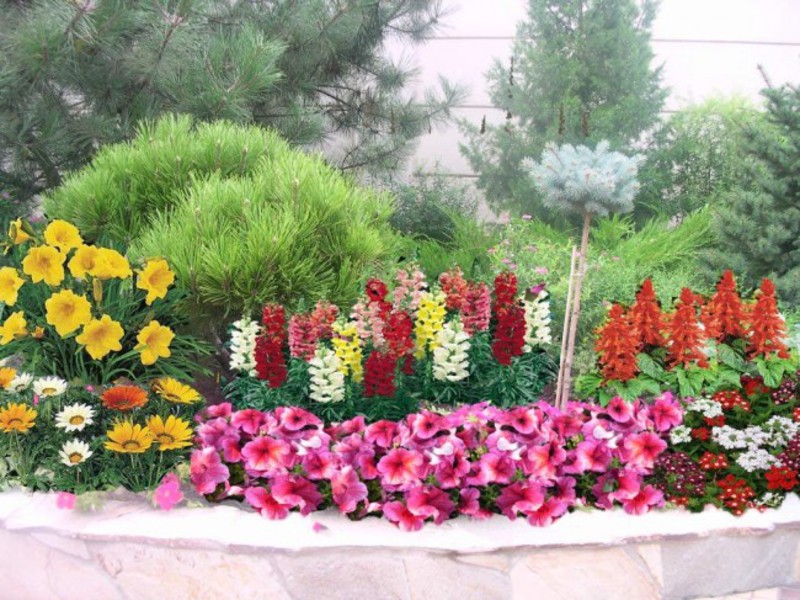
Recommendations for the design and design of do-it-yourself mixborders
It is advisable to lay a flower bed from March. But, if you want to do this in the fall, then you need to be in time before the beginning of October. The root system of flowers must prepare for wintering.
Constant flowering mixborders can be double-sided or unilateral. In one-sided flower beds in the foreground, creeping or low-growing varieties of perennials are planted, then medium-sized flowers come, in the last plan have tall species, ornamental trees and shrubs... In a double-sided flower garden, tall bushes must occupy the center of the flower bed, then everything is planted in descending order.
When choosing plants for mixborders, find out their features. For example, on wet ground, rocky grasses and bushes will suffer. Plants with wider roots will take over the neighboring territory and oppress other plants on it.
A mixborder that is placed on a lawn must be a bright spot. This requires framing with bricks, paving tiles, cobblestones or colored sand... It will be useful to add flowers to the mixborder that scare off pests: nasturtium, thyme, wormwood, marigolds, cilantro.
Among the low perennials of the first row, it is not bad to plant a few tall ones. This solution will create a special expressiveness of the flower bed. The number of storeys of perennials should not have sharp changes. Otherwise, a blooming flower bed looks unnatural in design.
In the first year of the void on the flower garden, it can be filled with pots with indoor plants, they are simply removed according to the degree of growth of perennials. Perennial mixborders should look like a natural meadow... Therefore, the plants in the flowerbed are planted tightly.
Additional elements
Today designers mixborders intensively "dilute" with various decorative elements - these can be large boulders, garden sculptures, lamps and even some types of exotic plants that will highlight the entire area of the backyard. And most importantly, do not forget about the sense of proportion, otherwise you risk turning a wonderful composition of conifers or flowers into something lurid and incomprehensible. Additional elements should not obscure the flowers, but only complement this composition.
